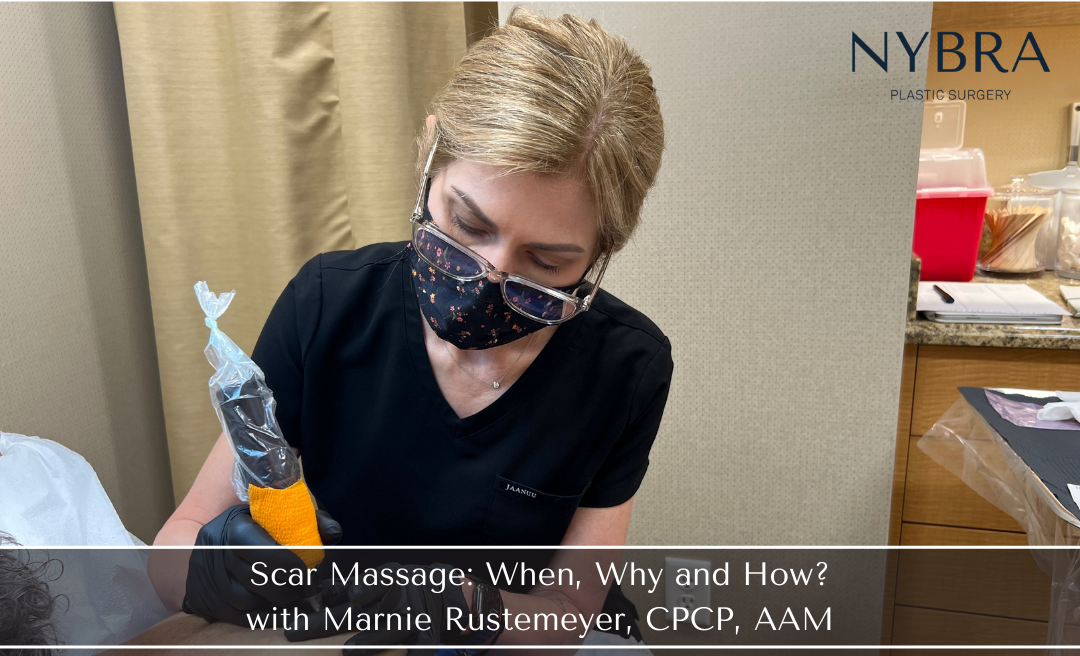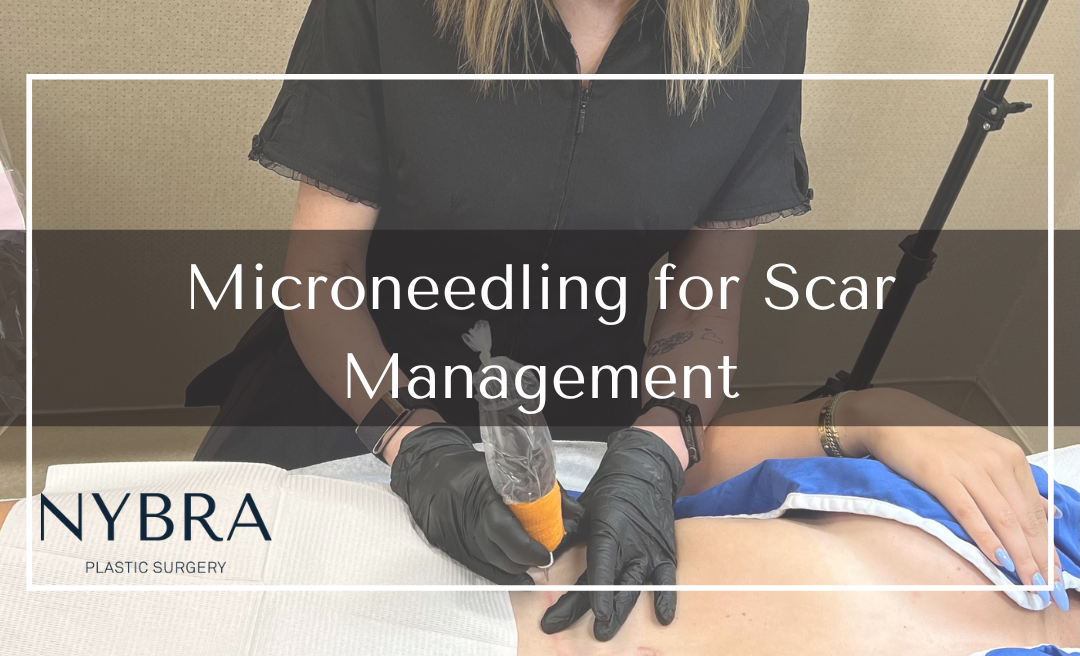Scar Massage: When, Why, and How?
September 16, 2022
Most people are familiar with scars, because most of us have a few. When the body produces collagen fibers to close and heal a wound – be it from an injury or an incision – the fibers do not grow in the same, consistent direction. These inconsistent fibers mark the skin with discoloration and even uneven texture that we call scar tissue.
Scar massage can improve the texture of a new scar by breaking up some of the collagen that builds up during the healing process, improving blood flow, and more. Read on for more information on wound healing and how and when to start working your scar.
Wounds heal in three phases.
There are three phases of wound healing after an incision or a deep wound. During the first phase, blood clots and the area looks red and inflamed. This is called the Inflammatory Phase. A few days later, new tissue forms close to the wound, beginning the Proliferation Phase. The area feels raised, scabbed, and possibly grainy or numb. This phase lasts 2-10 days.
Scars reveal themselves during the final Remodeling Phase of wound healing, when scabs typically fall off. As scar tissue forms, nerves heal, feeling returns to the area, and the scar feels less proliferated (textured). The scar may feel itchy and be more sensitive than regular skin. At first, it may appear purple, then white, then eventually become closer to skin color.
Genetics, history, and scar location are the three most impactful factors when it comes to scarring.
If you and your immediate relatives have a history of bad scarring, chances are your scar will be more noticeable. In addition, if your incision or wound is on part of the body that is under tension or is less fleshy or fatty (like a shoulder, shin, or knee), your scar will be more pronounced than it might be on a less taxed area of skin, like the buttocks.
Working your scar can improve the way it looks and feels.
For larger scars over joints, it’s critical that you massage (or “work”) your scar. This practice decreases scar tissue build-up, helps improve blood flow, drains excess fluid, improves sensation and range of motion, and may improve the appearance of your scar. Excess scar tissue can make muscles stiff and weaker, and in some cases can require scar tissue removal surgery. Scar massage can prevent those complications. It can also decrease numbness, tingling, soreness, and tightness in the area.
Scar massage timing is critical.
Massaging scar tissue is most effective in the first two years while the scar is still forming and healing. Work with your doctor to ensure that scars are in a good place to begin massage. It is important that your incision has fully healed and is a scar (not just a wound or scab). A premature massage can reopen or tear a wound or scab, leading to an infection.
Long-term massaging is typically well tolerated.
Massaging for more than six months will not hurt your scars and may prove beneficial. You can also help reduce post inflammatory hyperpigmentation by using a serum with skin brightening properties. Stop massaging and talk to your doctor if you have any new redness, bleeding, unusual warmth, or new or worsening pain in the area.
It’s important to be patient.
Scars will continue to heal and fade for up to two years after an incision or injury. They lighten during the remodeling phase and often improve with interventions like scar massage. A mature scar is smaller, flatter, and paler than a young scar.
Microneedling for Scar Management
When we talk about restorative tattooing, microneedling does not necessarily immediately come to mind. Microneedling is a minimally invasive treatment that is designed to rejuvenate…
